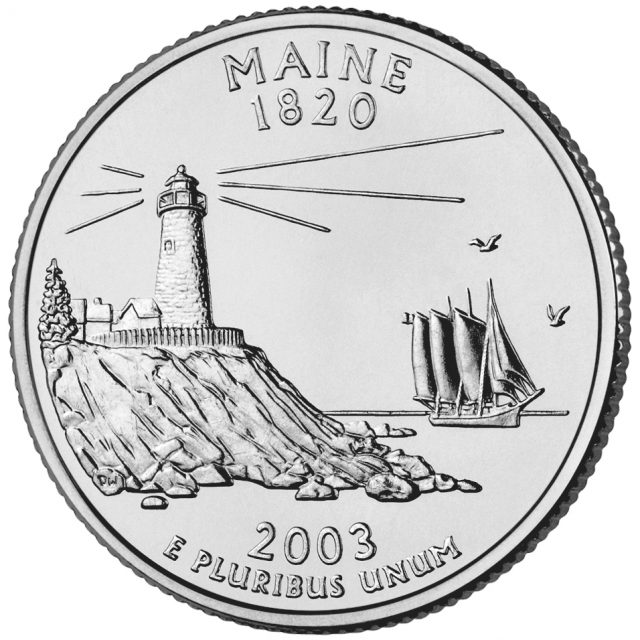What is a Windjammer anyway?
Perhaps you’ve heard of a Windjammer cruise or any of the tourist destinations using the term Windjammer. There’s a Windjammer Resort in the Caribbean and lots of Windjammer restaurants. There’s even a video game bearing the name. These businesses have latched on to the name, but do you know what a Windjammer really is? You might know that it’s some sort of sailing ship, but, what makes a ship a Windjammer?
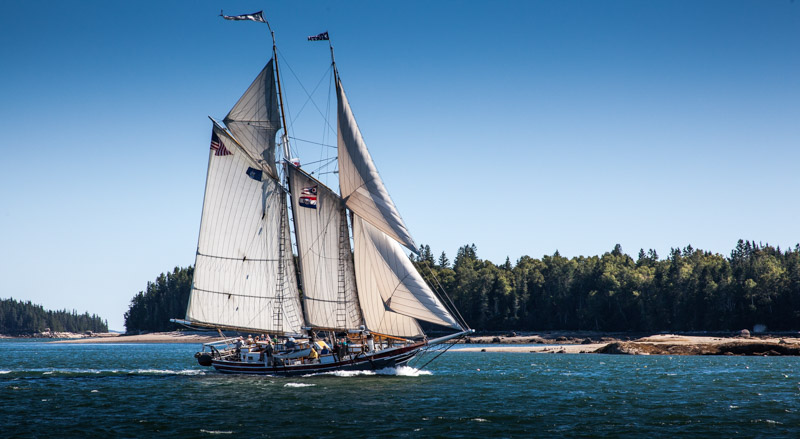
A gaff-rigged Maine Windjammer under full sail on Penobscot Bay, Maine. photo: Neal Parent
The term has evolved, but these days a Windjammer is a traditional sailing vessel specializing in hands-on, overnight cruises. How has the term evolved you ask? What’s considered a traditional sailing vessel? Read on.
First, Windjammers are “traditional sailing vessels.”
Windjammer is not a technical term so the actual sail configuration and type of rig doesn’t matter. A Windjammer could be a two-masted schooner or a three-masted barquentine (and you don’t even have to know what that means!) The important thing is that it is traditionally rigged. This means that most of the work can be done by hand as in the days of yore instead of by the electric winches and other high-tech gizmos that are commonplace on modern-day yachts. A traditionally rigged sailboat uses ropes and pulleys (nautically known as block and tackle) to make all the heavy lifting manageable. It almost always has gaff-rigged sails, which is the traditional rectangular sail shape used before modern triangular sails. This traditional aspect is part of the essence of a Windjammer cruise and allows guests to get involved in sailing the ship.
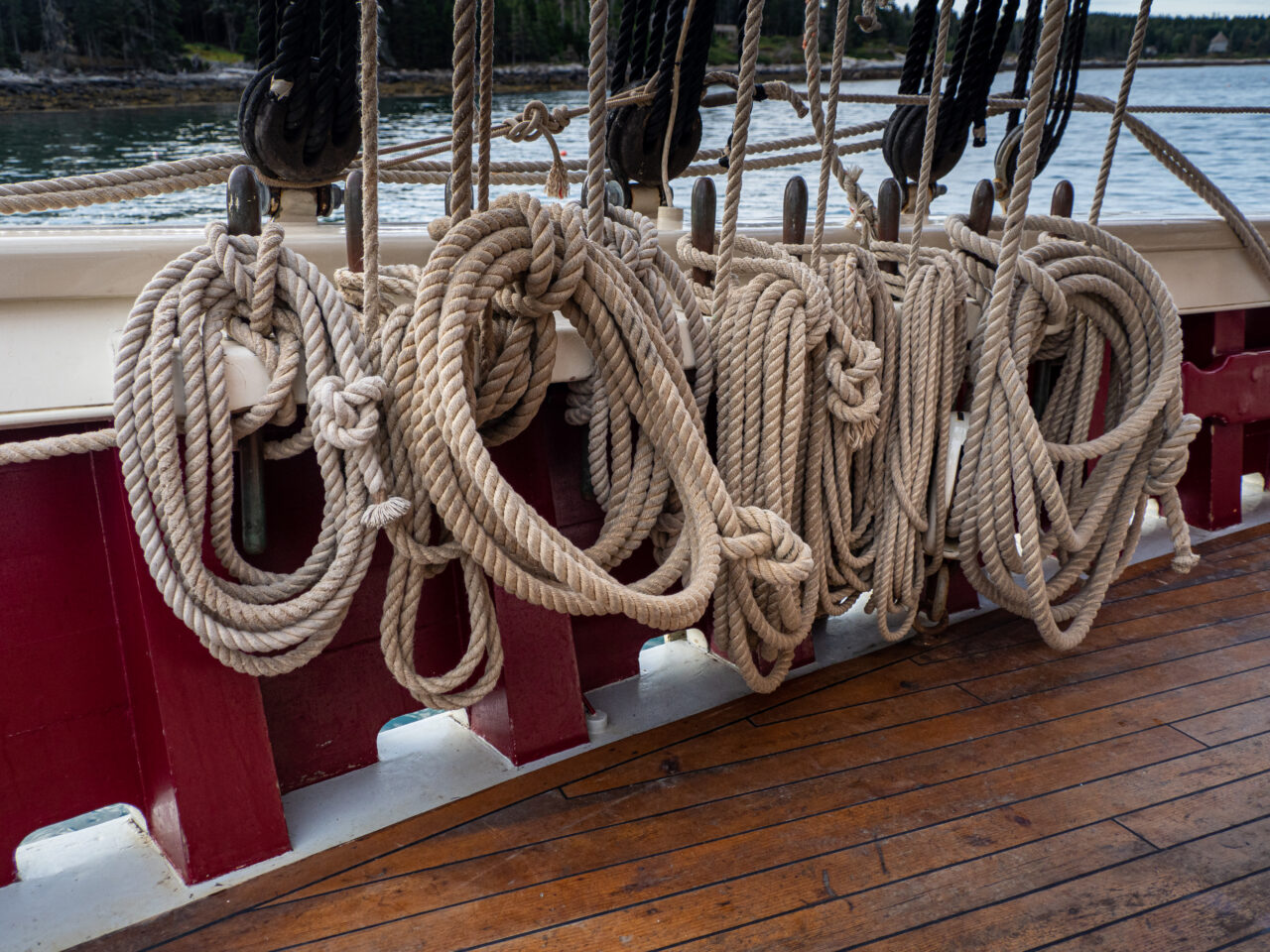
Coils of line used to raise the sails aboard a Maine Windjammer. Photo Fred LeBlanc.
So, what sort of overnight cruise can be expected on a Windjammer?
Typically a Windjammer cruise offers a loose itinerary of island-hopping with lots of hands-on sailing. Guests are encouraged to participate in the sailing of the ship. They can help the professional crew raise sails, or take a turn steering the boat, for example, though all participation is totally optional. And unlike most cruise ship cruises, there’s no set itinerary. Windjammer cruises focus on sailing, not keeping a schedule. The daily destinations are determined by the day’s wind and tide. Sure, the vessel is equipped with either an engine or a push-boat, but the motor is used sparingly. The experience emphasizes a return to the simple pleasures in life – reconnecting with nature, reconnecting with people, and reconnecting with yourself. By whisking guests away from the hustle and bustle of everyday life and getting them out on the water and involved in sailing and exploring, Windjammer cruises provide an escape from the daily grind.
This is exactly what Frank Swift had in mind when he offered the first Windjammer trip nearly 80 years ago in Camden, Maine, and called his business “Maine Windjammer Cruises”.
Windjammer cruises started in Maine
In the first few decades of the 1900s sailing was still the best way to transport freight in more remote coastal areas of the U.S, such as Maine. Smaller coastal sailing schooners could easily ply the coast and sail into all the small harbors. In fact, in the late 1890s Maine’s own Rockland harbor was one of the busiest seaports in the United States.
Schooners were everywhere. Until they weren’t.
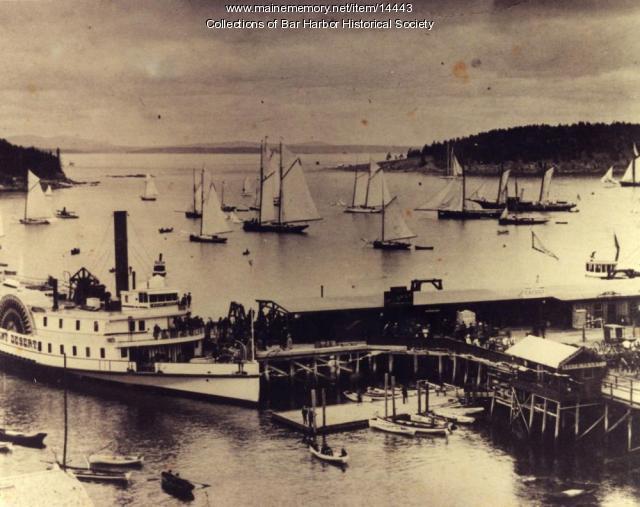
Schooners share the harbor with a paddlewheel steamship in Bar Harbor, Maine, circa 1900. photo from Maine Memory Network.
By the late 1930s as roads and railroads stretched into all parts of coastal Maine, trains and trucks quickly replaced schooners.
Frank Swift hated watching the demise of these schooners. After spending years on both merchant sailing vessels and steamers, he recognized the romance of the old sailing vessels and the adventure they offered. So, he repurposed an old wooden schooner to offer sailing trips for passengers and in 1936, he offered his first overnight cruise. He called them Windjammer cruises. Over the next two decades he would repurpose nearly a dozen vessels into Windjammers. He didn’t invent the word “Windjammer” though, he merely repurposed it.
The term “Windjammer” dates back to the late 1800s and actually had negative connotations.
The Oxford English dictionary still defines a Windjammer as “a large merchant sailing vessel” because that’s exactly what they originally were. Windjammers were the grand sailing merchant vessels carrying cargo across the oceans, say from Europe to the South Pacific. These ships were hundreds of feet long, had many masts (usually three or more) with towers of canvas and they specialized long distance travel. During the second half of the 1800s and even the early 1900s these ships were preferred to steamships for long ocean-going passages because the new technology of coal was too expensive for long voyages and took up too much cargo space. However these sailing ships weren’t actually called Windjammers until the latter part of the 1800s.
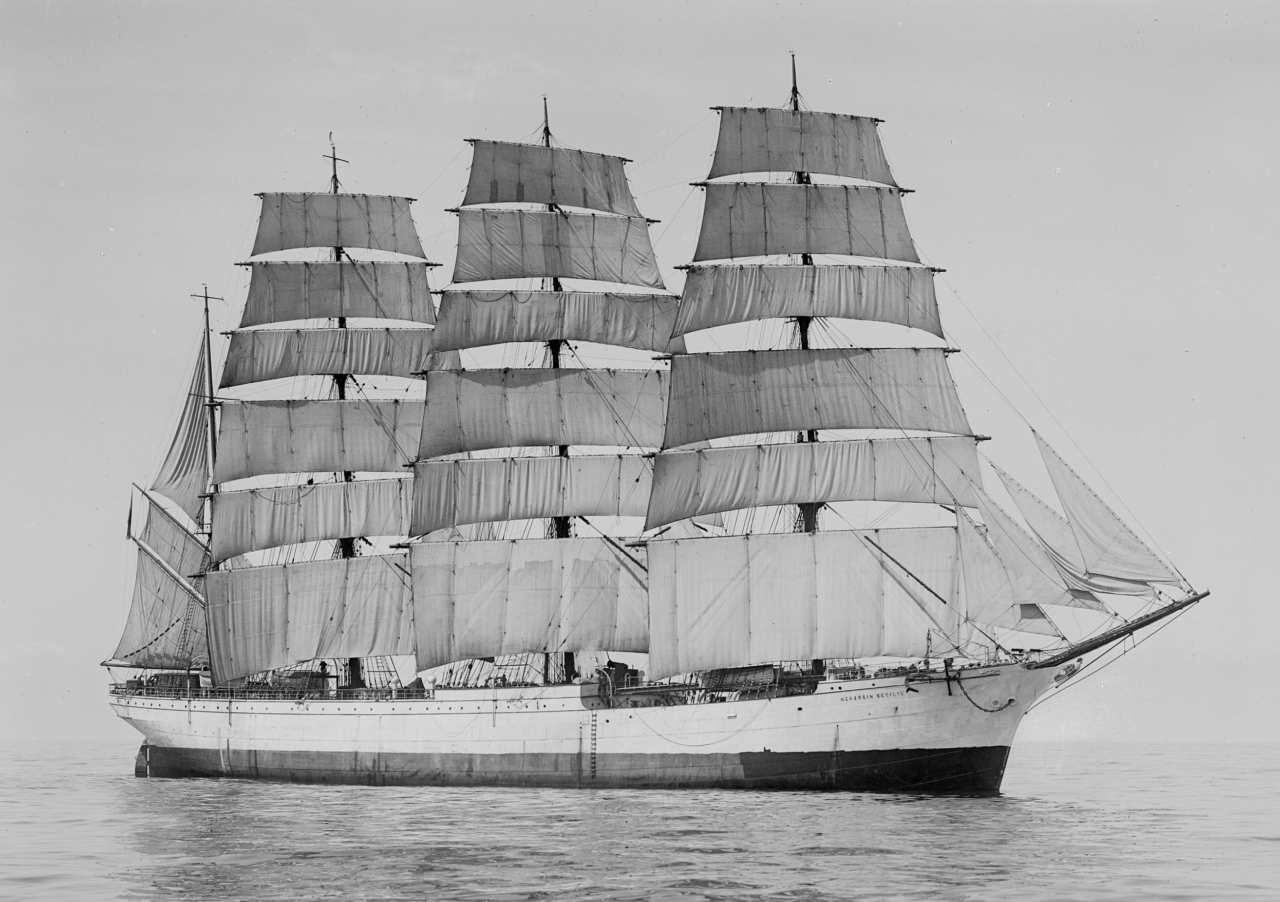
German built Barque Heragin Cecile, one of the fastest Windjammer built. credit to Wikipedia
As steamers became more and more prevalent in the late 1800s, the steamship sailors would pejoratively refer to the sailing cargo vessels as ‘Windjammers’. The Windjammers were slower, and, worse, they were granted right of way over the steam vessels. Steamship sailors would say that the Windjammers “jammed” up ports and harbors. Years later though Frank Swift reclaimed the term Windjammer knowing that a sailing ship that “jams the wind” was exactly what people needed.
The Windjammers of Frank Swift’s day were rough and rustic. There weren’t private cabins or gourmet cuisine as there is now, but they quickly struck a chord with people wanting to escape Boston and New York. Swift ran Windjammer trips for over two decades with a dozen old hardworking sailing schooners and started an industry that has kept these schooners alive and sailing.
Nowadays you’ll see the term Windjammer used by all sorts of sailing businesses, such as a sailboats that offer two-hour sailing day-trips or high-end modern yachts that offer overnight trips. They’re all trying to capture the magic of the Windjamming experience that has been thriving in Maine for decades.
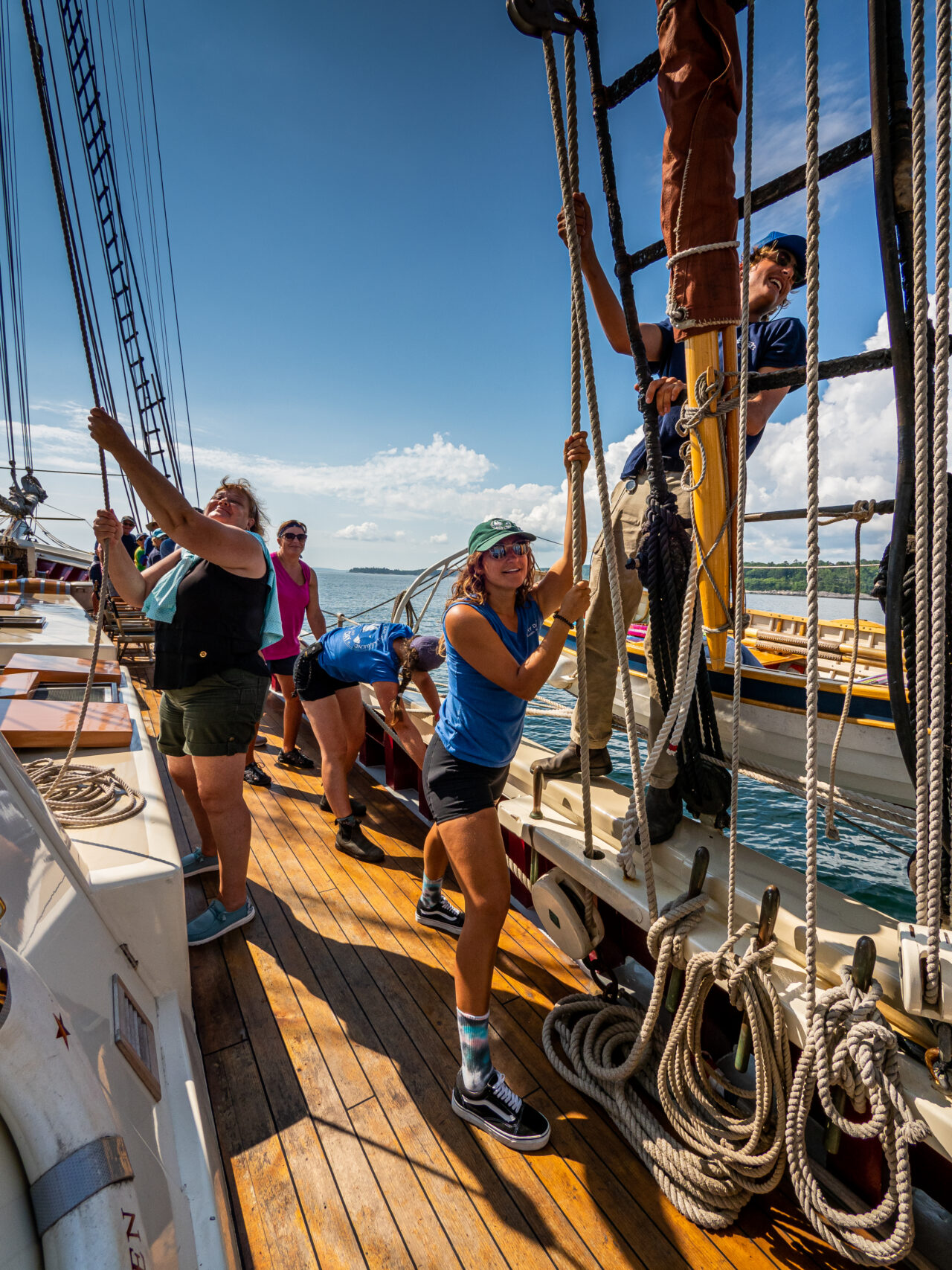
Guests and crew help raise the mainsail on a Maine Windjammer. Credit Fred Leblanc
Categories: Fleet, Maine Windjammers
Tags: Frank Swift, Maine windjammers, overnight cruise, Windjammer cruise


